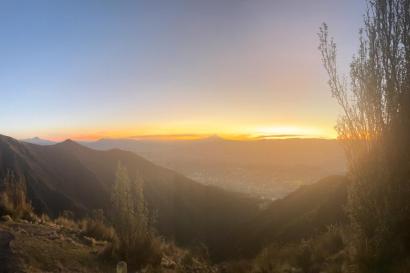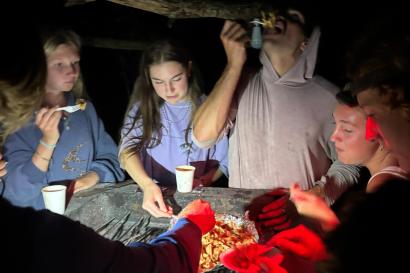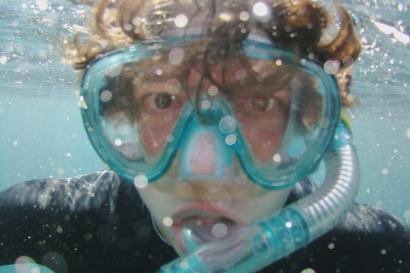Before I first left for Ecuador, quite a few people I talked to hadn’t realized that humans lived in the Galápagos Islands. It is supposed to be a land of mystical wonder, filled with dragons that swim and shelled beasts that skulk around inch by inch. However, it is estimated that nearly 35,000 people call these islands home.
There were no permanent settlements here in the Pre-Colombian Era, and as a result, the “culture” of the Galápagos Islands is really just a mashup from the different regions of Ecuador thrown in with the implications of living on a tropical island that is often a tourist spot for Westerners. This often leads people to say the the Galápagos Islands “has no real culture.” I’d argue that this can’t really be true, however.
As hard as it may be for some to believe, the people of the Galápagos lead as normal of a life as whoever is reading this. They spend a lot of time with their families, the kids do homework, and people have normal jobs (my host dad was an accountant and my host mom worked at the airport, for instance). There of course is a huge tourism industry here, and people are finding their ways to move here to take advantage of the better pay than in much of the rest of the country. People are people.
The title I chose of “Life in the Galápagos” has several interpretations based on the underlying assumptions you hold based on your background and who you are. For most Westerners, the most immediately thought of life here revolves around the famous charismatic megafauna, primarily the boobies, tortoises, and sea lions, among many others. However, most Galapagueños, just like arguably every human group in the world, will tend to prioritize their needs over the security of the environment. This conflict of interest between these two groups can be very dangerous. Regulations that have been passed to solely protect animals or the environment have caused huge rifts in the population. Many believe that their rights have been infringed upon regarding these measures. At what point does it truly help “the world” and at what point is it just expressed neocolonialism? How can Americans criticize people here for using their resources when we have been doing it as aggressively as anyone for our entire history? These are questions I’ve asked myself and may never provide an answer for.
In the photo gallery I’ve included quite a few pictures of the town of Puerto Baquerizo Moreno so you can see what the towns of the Galápagos often look like.

Thomas Hotaling
<p class="MsoBodyText" style="margin-top:.4pt; margin-right:21.05pt; margin-bottom:.0001pt; margin-left:5.5pt"><span style="line-height:103%">Hello! My name is Thomas, and I’m from St. Louis, Missouri and currently am a second year at Case Western Reserve University. I like to think of myself as an avid outdoorsman, and you can often find me backpacking or just having fun outside, and I’m even a summer camp nature counselor. I'm currently studying environmental geology because rocks are the absolute coolest, and if you don't believe me I'd be happy to share my opinions with you.</span></p>








